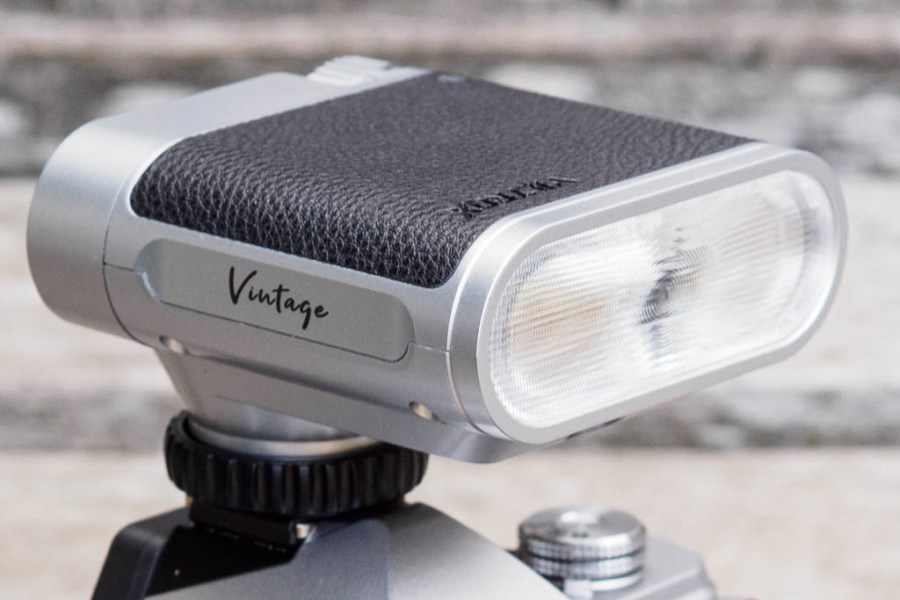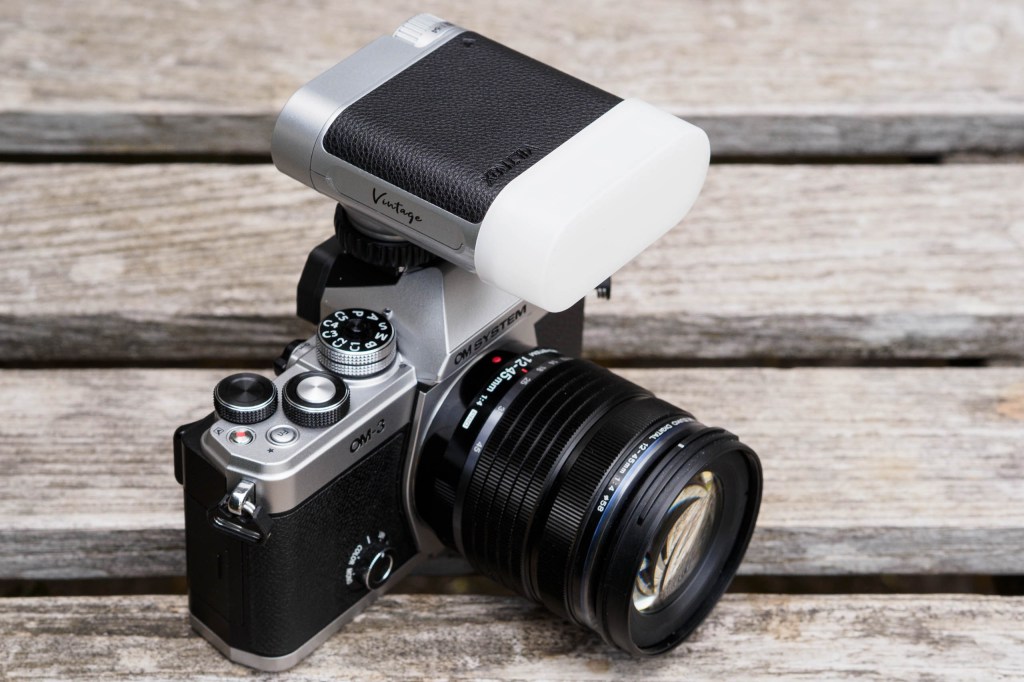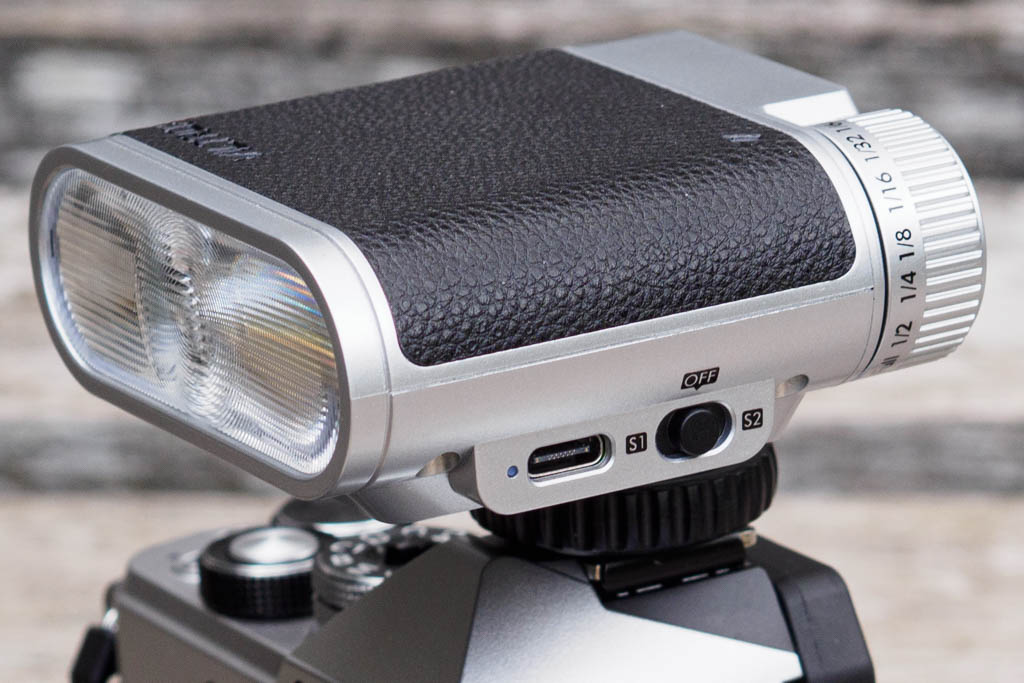Amateur Photographer verdict
The Viltrox Vintage Z1 scores points for its simplicity, wide camera compatibility, and retro-inspired good looks. But it’s extremely basic in terms of features.- Simple to use
- Good-looking design
- Works with a huge range of cameras
- No flash metering of any kind
- No bounce-flash option
The Viltrox Vintage Z1 is a small, affordable on-camera flash that’s designed to offer a bit more style than your average black plastic unit. The ‘Vintage’ in its name alludes to its two-tone finish, with a silver shell and black leatherette covering. But it could equally refer to its fully-manual operation – there’s no flash metering of any kind.
Viltrox Vintage Z1 Retro flash at a glance:
- $50 / £48
- Guide number 12m at ISO 100
- 28mm wideangle coverage
- Manual power settings down to 1/64th
- Internal Li-ion battery
- 6.8 x 7 x 7.4cm, 116g
- viltrox.com
Indeed this is, at heart, a very simple device. Its head is fixed, with no swivel, bounce or zoom that you’ll find on higher-end units. It’s designed to cover an angle equivalent to a 28mm lens on full-frame, although I found I could get often away with going a little wider, too.
The unit uses a basic hot shoe, with no brand dedication. This means it’ll work on most cameras, both film and digital. If your camera has a large central contact to trigger the flash, it should be fine. But this excludes certain models with hot shoes but no contact, such as the Canon EOS 250D, Fujifilm X half, and Panasonic Lumix S9.
Viltrox Vintage Z1 Retro flash key features:
- Diffuser: A clip-on plastic diffuser can soften the output a little, at the cost of about a stop of light
- Power: The unit employs a built-in Li-ion battery that charges in 50 minutes via the USB-C port
- Locking ring: Screwing down a large black ring above the hot shoe locks the flash onto your camera
- Optical slave: The flash can be used wirelessly off-camera, thanks to a built-in optical trigger. This has two modes, including one that ignores a metering pre-flash
Controls are very straightforward. A switch on the back turns the unit on and off, while the light output can be adjusted over a 7-stop range using a large dial on the left. An indicator light between the two glows red during recharge, and turns green when the flash is ready to go again; it also doubles-up as a flash-test button.
I measured the recharge time between flashes to be almost 4 seconds at full power, dropping to under a second at 1/8.
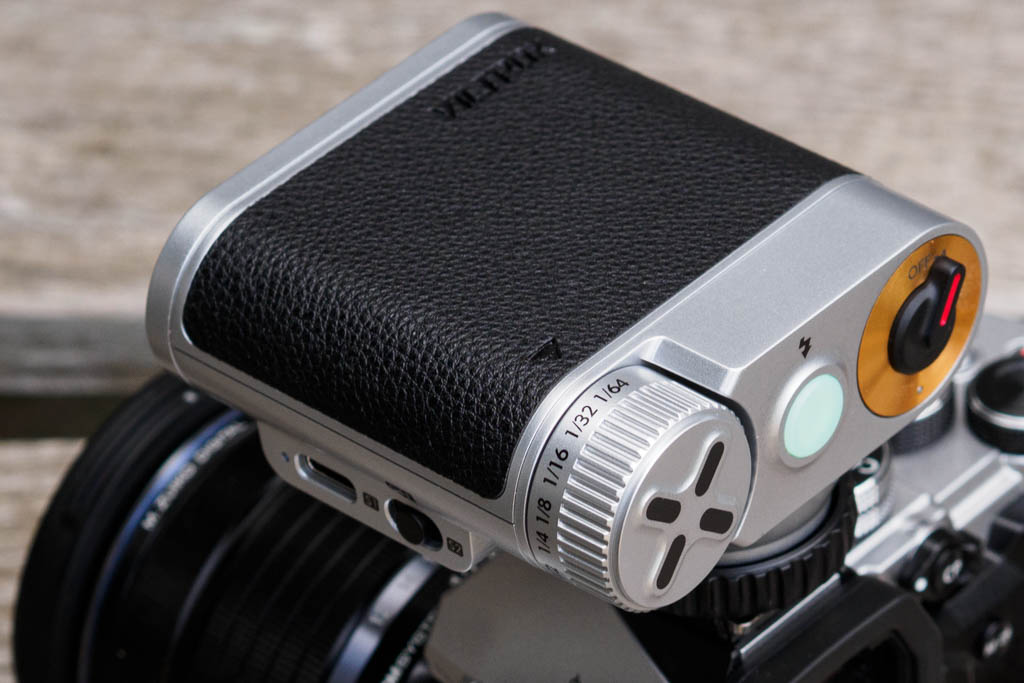
The only other control is a small switch on the side to enable optical triggering, which facilitates more creative lighting setups. This allows you to place the Z1 off-camera and trigger it using another on-camera flash. There are two modes, S1 and S2, with the latter ignoring any metering pre-flash from a TTL device.
Just be aware, though, that the Z1’s optical sensor is placed at its front, under a red plastic cover beneath the flash tube. You’ll want to maintain line-of-sight between this and the trigger unit for the most reliable results, particularly when shooting outdoors.
Power is provided by a built-in Li-ion battery, which promises between 400 and 10,000 flashes per charge. It’s topped-up via a USB-C port. A tiny white LED pulses during charging and glows continuously when it’s complete.
Unsurprisingly, build quality is a touch plasticky, but that’s perfectly acceptable given the price. The flipside is that the unit is very small and light, so it takes up little space in a bag and you won’t mind carrying it around.
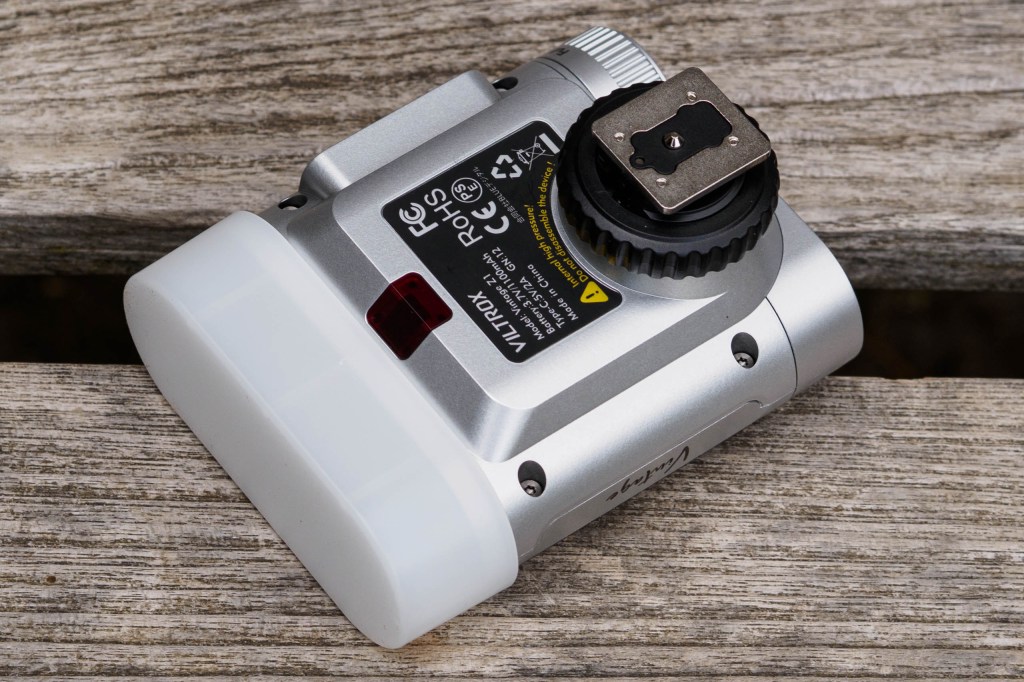
The specified guide number of 12m at full power looks accurate in my tests, as do all the lower-power settings. When shooting digital, you can simply select the best power setting by trial and error. With film, you can estimate it based on the ISO, aperture and subject distance.
However, it’s worth noting that the similar-looking, but slightly more expensive Godox Lux Junior has an Auto option for use with film cameras, that will determine the power required automatically.
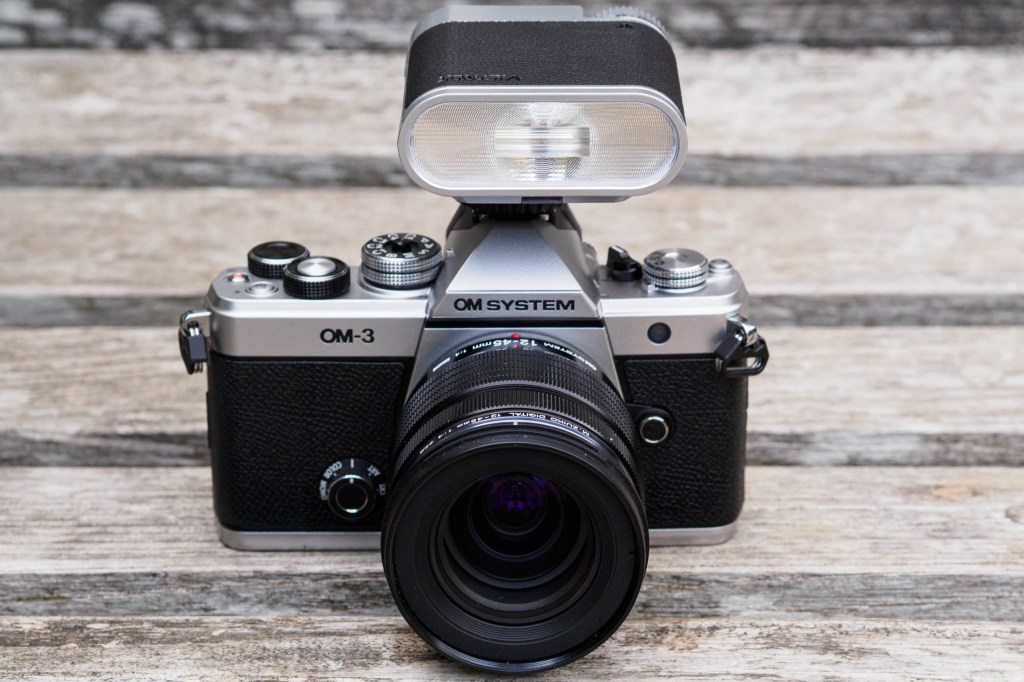
While the Z1 can be used as a main light source indoors, you’ll get pretty harsh results, as the flash bulb ends up being placed very low over the lens. That’s a look that photographers have generally tried to avoid, although it’s become popular in some quarters for its perceived retro, film-era look. Using the clip-on diffuser can soften it a little, too. But overall, this unit is probably best employed for providing a touch of fill-in flash outdoors.
Our Verdict
If you want a small, simple and affordable on-camera flash, and can live with setting its output manually, the Viltrox Vintage Z1 will do the job pretty well. However, more sophisticated units are available for not too much more money.

Follow AP on Facebook, X, Instagram, YouTube and TikTok.

